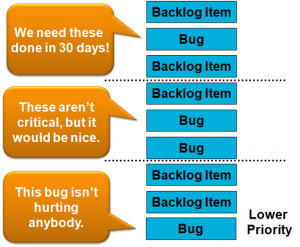 Working in software development can be challenging and tricky without the right plan in place, especially without a plan that caters to your employees’ work styles. Here at SoftArtisans our development team follows the agile dogma and we’ve discovered several lessons along the way. Wondering if agile development is right for your team? See below for 5 things to keep in mind when implementing this work style.
Working in software development can be challenging and tricky without the right plan in place, especially without a plan that caters to your employees’ work styles. Here at SoftArtisans our development team follows the agile dogma and we’ve discovered several lessons along the way. Wondering if agile development is right for your team? See below for 5 things to keep in mind when implementing this work style.
1. You absolutely need backup from higher-ups.
Too often I have seen or heard of departments that were “going agile,” but management was not behind them. No matter how enthusiastic about it the developers were, their plans were ruined every time management expected something to be “like it used to.” Managers who don’t give things time to adjust create developers who don’t give things time to adjust, and then everything is doomed to fail.
2. Retros are vital.
One important thing about agile is that you can change things quickly when you need to. This applies to the direction the software is taking, but it also applies to the processes and mindsets of team members. This is what retrospectives are for. A good team will be able to be honest about what’s working and what isn’t and subsequently make changes for future sprints.
This whole process is much easier when…
3. Retros don’t include higher-ups.
Management usually wants to know what’s going on, and that’s great, but retros are not the place for it. Continue reading Agile Development: 5 Lessons Learned
 The concept of scrum can seem very simple in theory. As stories come in, the team analyzes them, and then story points them based on the complexity of the story. It couldn’t be simpler. But in practice, it is rarely this simple. The problem is that sometimes you won’t know just how complex a story is until after you’ve played around with it a bit. At my company, this is a problem we face almost every time we meet to story point backlog items.
The concept of scrum can seem very simple in theory. As stories come in, the team analyzes them, and then story points them based on the complexity of the story. It couldn’t be simpler. But in practice, it is rarely this simple. The problem is that sometimes you won’t know just how complex a story is until after you’ve played around with it a bit. At my company, this is a problem we face almost every time we meet to story point backlog items.